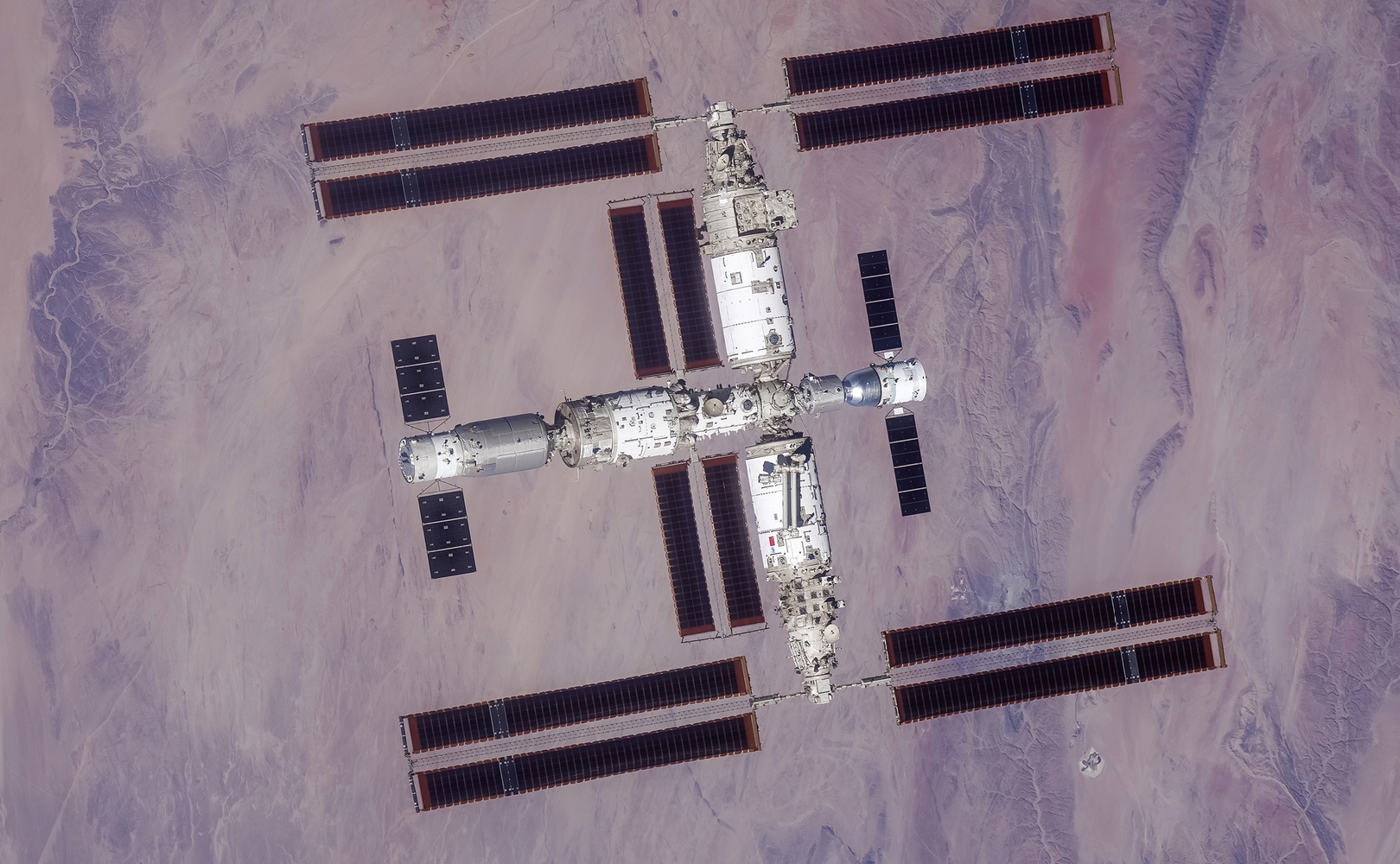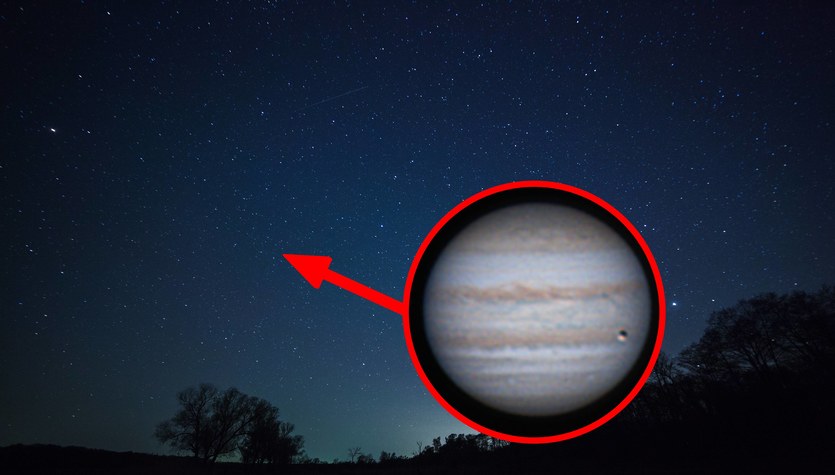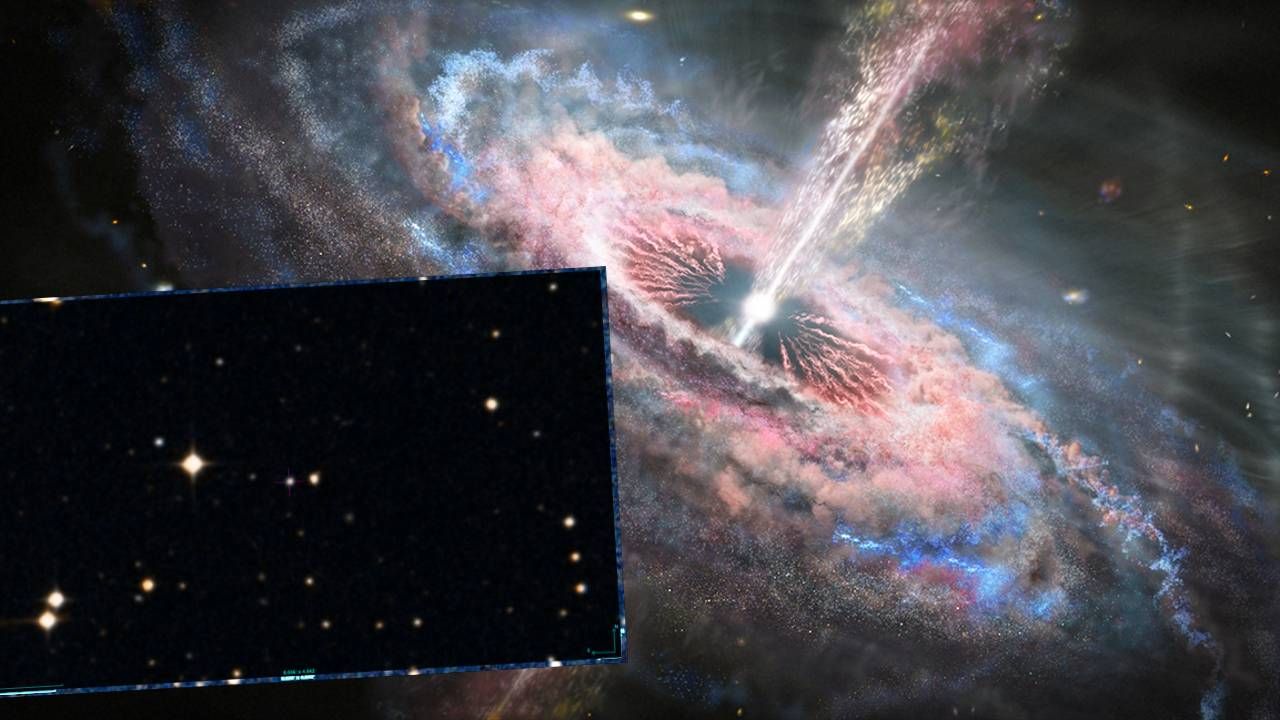For the first time, we can admire the Chinese space station in high-resolution images taken from orbit. Until now, such pictures have accompanied the International Space Station, and now we have pictures of the second station, which is currently orbiting the Earth.
The Chinese National Space Agency (CNSA) has, until now, been reluctant to share with the world photographs of its greatest achievement in recent years: the Tiangong Space Station, the only such facility currently operated by a single country. The International Space Station, or ISS, is the result of cooperation between many countries and space agencies.
We have already seen images from the surface of Tiangong, most often as video transmission elements, from inside the station, images taken through the windows of the station, but so far we have not been able to count on magnificent views of the entire structure from orbit. Especially in high resolution.
However, in the end, CNSA decided to proudly display images similar to those provided by NASA or the European Space Agency. Tiangong shows off its three modules launched into orbit starting in 2021, two docked vehicles, one for the crew and one for cargo, and deployed solar panels. Currently, the station is home to the three-person crew of the Shenzhou 17 mission sent by the Chinese Manned Space Agency CMSA. This organization should not be confused with the China National Space Agency, which is responsible for implementing China’s manned space program.
Tiangong Space Station On the left is the docked Tianzhou cargo vehicle, and on the right is the Shenzhou crew vehicle. (Image: CMSA)
Where did the current Tiangong Station come from?
In 2011, the US Congress decided to stop any joint projects in cooperation with CNSA. This has motivated China to implement its own space station project. Although much of the technology has its roots in Russian solutions, China is becoming more independent every year.
In 2011 and 2016, the precursor to the Tiangong station, with a similar name but with a number next to its name, was launched into orbit. These were vehicles consistent with what the Soviet Union was doing in the 1970s and 1980s under the names Salyut 6 and 7 (second generation space stations). These are single-unit prototypes of the future Tiangong station, the design of which was presented in 2019.
Tiangong station plan. (Photo: Shujianyang/CC BY-SA 4.0)
At the end of April 2021, the Tiangong main module, called Tianhe (like the world’s previous fastest supercomputer), was launched into orbit. In 2022, it was joined by the Wentian and Mengtian research units. Each unit is equipped with its own solar panels, which are configured so that when all elements are connected, an efficient power supply system for the entire station is created.
Tiangong orbits the Earth at an altitude of 340 to 450 km, which is similar to the International Space Station, which has a more stable orbit of approximately 415 km. The Chinese space station can be seen in Polish skies during flights, but it usually flies low above the horizon, making it difficult to monitor.
Tiangong Station. It is similar to the old Russian MIR system, but as advanced as the International Space Station
The Tiangong station’s similarity to the Soviet and then Russian Mir space station is due primarily to the way the station’s components and power elements, i.e. solar panels, are connected, as well as their size.
View of Tiangong Station above ground. (Image: CMSA)
Currently, the central axis of the station is the docking unit, to which manned vehicles are docked in Shenzhou (cargo vehicles are docked in Tianzhou on the other side of the Tianhe unit). This unit currently connects all three station units.
Tiangong station will be expanded in the near future. There are several possible construction variants, for example using the available communication module, or there will be another module attached to the Tianhe, which will allow you to connect subsequent terminal modules like a domino pattern. And so on and so on.
One of the variants of expanding the station. First unit (green) then two more units. Photo: Wang Xiang, Zhang Qiao, Wang Wei / CC BY-SA 4.0)
The station’s first additional component is the Xuntian Space Telescope. It will not only be a research unit belonging to the station, but an independent unit that can be docked at the station to conduct regular technical checks if necessary.
Despite the resemblance to the MIR station, which always gave the impression that it was assembled from hastily found parts in a space junkyard, Tiangong looks very aesthetic. However, compared to the International Space Station (MSK, International Space Station), there are fundamental differences. First of all, the size. Tiangong’s dimensions are about 56 x 39 metres, while the ISS’s span is 109 x 73 metres. Tiangong’s usable internal space is 340 cubic meters, of which 122 cubic meters are available for astronauts not wearing suits.
Meanwhile, the International Space Station provides about 1,000 cubic meters of space, of which 390 cubic meters are for astronauts. In addition, the International Space Station has a kind of backbone, the so-called truss, to which not only the station modules are attached, but also platforms containing experiments, heat sinks, and solar panels.
The International Space Station has been welcoming astronauts and astronauts for 23 years, and the first crew arrived in Tiangong in June 2021. The construction and development of the International Space Station was basically a series of experiments and experiments. China has used years of preparation to create a station that looks like a better-designed vehicle. However, the ISS is able to accommodate more people on board, up to a dozen or so, and seven during a regular expedition, while Tiangong, due to its size, can accommodate three astronauts, and six during a mission change.
Source: CMSA, NASA, ESA, inf. king

Echo Richards embodies a personality that is a delightful contradiction: a humble musicaholic who never brags about her expansive knowledge of both classic and contemporary tunes. Infuriatingly modest, one would never know from a mere conversation how deeply entrenched she is in the world of music. This passion seamlessly translates into her problem-solving skills, with Echo often drawing inspiration from melodies and rhythms. A voracious reader, she dives deep into literature, using stories to influence her own hardcore writing. Her spirited advocacy for alcohol isn’t about mere indulgence, but about celebrating life’s poignant moments.










